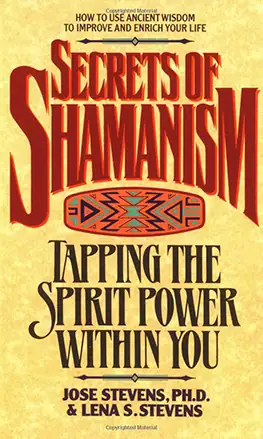Table of Contents
01.) History of the Term Shaman
02.) Shamanism Is a Worldwide, Cross-Cultural, Spiritual Path
03.) What Is a Shamanic Practitioner?
04.) Shamanism is Healing
05.) What Is a Shamanic Healing?
06.) Origins of the Term ‘Shaman’
07.) Current Interest in Shamanism
09.) Who Are the Shamans?
10.) What Are the Areas of Specialty for Shamans?
11.) Shamanic Journeying
12.) Shamanic Maps
13.) Shamans and Extraterrestrial Life Forms
14.) Shamanism and the Web of Life
17.) Who Are Shamans and What Do They Do?
18.) Historical Shamanism
19.) How Did Shamans First Learn Their Skills?
20.) Historical Shamanism and Spiritual Practice
22.) Shamanism and Power
23.) Shamanism and the Martial Arts
24.) Shamanism and Prayer
26.) Are All Shamans the Same?
27.) What Do Shamans Today Look Like?
29.) Shamanism and Plant Medicines
30.) Shamanism, Music, and Song
Shaman is an Evenki word from Siberia, meaning one who “sees” or “penetrates to the source.” Shamans are local leaders who perceive the fundamental nature of the universe and see the big picture. Around the world, shamans are called by many local names, among them sorcerer, healer or curandero/a walker between the worlds, medicine man/woman, priest, transformer, psychopomp and so on.
Shamans may inherit the role from their ancestors, come into it by surviving an accident or disease, display talent for it as a child, or merely seek training on their own. Both males and females function as shamans for their communities, although women often raise their children first. Generally, to become a shaman requires many years of rigorous apprenticeship with many tests and initiations along the way. Not everyone who begins their training succeeds at becoming a shaman. Some may even die in the process.
Shamans are typically high functioning people-highly respected by their communities as advisors and consultants, dedicated to healing, manipulating reality, divining, forecasting, or prophesying future outcomes. They can choose to enter altered states at will to perform a variety of functions, including as ceremonialists, engaging in the creation of art, trance dancing, chanting, and healing. Shamans know where to access power and information from nature. They study and communicate with plants, animals, elements, and the spirit world. They are excellent problem solvers, diagnosticians, psychologists, storytellers, teachers, and hypnotists.
Historically, in many parts of the world, kings, queens, and emperors were always trained shamans and, if not personally trained, they always employed shamans to advise them on many matters.
Quite probably, the human race would not have survived without the presence of shamans because they were the first doctors, knew what plants could be used for medicines, and could see where to direct the hunters to find game. They could predict the weather and had many skills that were critical for the survival of their tribes and communities.
Shamanism is the world’s most ancient spiritual practice, predating all the world’s known religions and going back as far as forty thousand years or more. Despite efforts by Hitler and organized religion to wipe it out, it has persisted until the present day within the indigenous peoples of the world. Its focus is on accumulating knowledge and power in order to better manipulate the quantum field to heal, teach, and create. Shamanism is cross-cultural and has developed independently in every continent of the world, and yet there is an amazing consistency in its approach. Shamanism has no dogma, no religious hierarchy, and is a tradition characterized by direct revelation and by rigorous apprenticeships with hands-on experience. There is a good case to be made that without shamanism, the human race would never have survived.
Shamanism is a nature-based path of direct revelation, meaning that each person has access to Spirit and spirits without the need of any hierarchical structure. Today, there are many parallels between the discoveries of quantum physics and the understandings of shamanism.
History of the Term Shaman
Ancient history is murky on when the actual practice of shamanism dates back to. Medicine men, natural healers, and those that were considered connected to spirits and power have historical documentation back from at least the last 20-30,000 years. The word ‘shamanism’ is thought to be derived from the Manchu-Tungus word šaman, meaning “one who knows”. The Tungusic term was subsequently adopted by Russians interacting with the indigenous peoples in Siberia. The word was brought to Western Europe in the mid-17th century via travellers through Russia.
Shamanism Is a Worldwide, Cross-Cultural, Spiritual Path
Shamanism is a cross-cultural, spiritual path practiced in every continent of the world. It is remarkably similar everywhere, even though, throughout history, there has been little contact between shamans in widely divergent parts of the world.
All attempts to wipe out shamanism by the Nazis and by various organized religions have failed. Although some people consider shamanism a religion, it has no dogma, pope, a sacred book or any universal set of rules or commandments. In fact, many indigenous shamans around the world are Catholic, Jewish, Buddhist, and practicing members of many different religions.
What Is a Shamanic Practitioner?
Not all people who practice shamanism are trained shamans who have apprenticed for many years under a master shaman teacher. All members of communities and tribes who follow the shamanic way of life are familiar with the shamanic world-view and practice fundamental aspects of shamanism. They may communicate with nature spirits, pray in a shamanic manner, honor the plants and animal spirits and perhaps do some healing work.
Since most shamans live in remote areas of the world and not in urban centers, it is not so easy for most people to apprentice with a traditional master shaman. However, increasingly, shamans of different areas of the world are traveling extensively to bring their knowledge to people living in urban areas on different continents. Although they have not necessarily grown up in a tribal community and have not apprenticed for long years with a shaman in the traditional ways, many people with great talent are adopting the shamanic nature-based worldview and some have learned a vast amount about healing and other aspects of shamanic practice. These people are called shamanic practitioners. They have not necessarily gone through an old school shamanic apprenticeship, but are skilled healers, ceremonialists, and teachers in their own right. Some few actually have apprenticed with master shamans for years but sensitive to appropriation issues they may choose not to call themselves shamans but rather shamanic practitioners.
It is acceptable to ask the shamanic practitioner what their training and experience has been. A person who has taken a weekend workshop in shamanism or read a couple of books should by no means call themselves a shamanic practitioner. Since these days some do, it is best to be discerning.

View Shamanic Practitioners
Shamanic practitioners listed in our directory have completed a one or two year studies program with the Power Path as well as our basic practitioners trainings.
Practitioners noted as advanced practitioners have completed an advanced training requiring a deeper commitment of further prerequisites both with the Shipibo in Peru and the Huichol in Mexico.
Shamanism is Healing
Ultimately shamanism is the study and practice of accumulating, storing, and utilizing power to suspend everyday laws of nature and to influence and manipulate reality for the purposes of healing, prophesying, divining, and engaging in supernatural feats.
What Is a Shamanic Healing?
Shamanic healing starts with an interview to find out what the symptoms are, how long the person has been having them, as well as severity and type of pain and other pertinent information such as whether the person has been seen by a medical doctor and what types of medication the person is taking. The practitioner then prepares themselves, usually by silently observing the patient in a meditative state, by asking their allies or helping spirits and the patient’s allies to help them see what is needed in the healing.
Depending on the information they receive, they may take various approaches to the healing using the proper shamanic tools for the job. Since most problems come from dammed up flows of energy the most common approach is restoring circulation and movement of energy in the body.
The practitioner may use sound healing with a drum or rattle, feathers, tobacco, crystals or other tools to clear resistance in the form of fear or anger patterns, get circulation moving again, restore lost parts of self, or energetically extract foreign energy or obstacles. Occasionally, they may use simple massage techniques. Commonly, the practitioner will sing, whistle, or hum traditional healing songs.
Shamanic healings are generally short, between fifteen minutes to half an hour, but in some cases, they can last up to an hour.
While it is common for the practitioner to charge a modest fee for such work, they should never manipulate the client by suggesting that only they can save them nor should they charge exorbitant fees or make any inappropriate sexual innuendos or touch the patient in an unacceptable way.
Learn About Shamanic Healing
Shamanic healing is a practice dating back at least 75,000 years and is the most ancient healing tradition known on the planet. It stems from the belief and understanding that all healing has a spiritual component and that the spiritual, emotional, and energetic need to be treated in order for a person to be well.
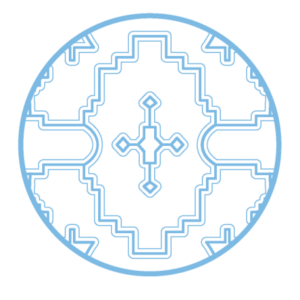
Origins of the Term ‘Shaman’
According to wikipedia, the online encyclopedia, the popular word “Shaman,” now used all over the world, is believed to be derived from the Manchu Tungis word saman. The word has a variety of meanings, “one who knows,” “one who sees,” “one who sees in the dark,” one who penetrates to the core.” Russians interacting with the indigenous peoples in Siberia eventually adopted the term, particularly the Evenki tribe in the Southwest. The word saman, including their way of seeing the world and their practices, were believed to have been brought to Western Europe in the mid-17th century via travelers through Russia. The words shaman, shamanism, shamanic, and shamanistic are all derived from this one Evenki word saman.
Currently, there is growing evidence that ancient Greeks thousands of years prior, from as far as southern Italy, traveled on foot to both Siberia and the Himalayas and brought back with them the wisdom and practices of the shamans there. Parmenides, considered to be the father of modern science, who heavily influenced Plato, was revealed to have used ancient shamanic practices such as dark solitary retreats in caves to induce altered states to access deep communication with “the goddess.” The goddess who Parmenides contacted, most likely through the shamanic journey method, remains unknown because the ancient Greeks had many goddesses and they were extremely important to them. The goddess he contacted was believed to bestow Parmenides with much knowledge and insight into the nature of reality. Rather than valuing rational thinking exclusively, it was his meditations in the dark, speaking to the goddess that showed him that intuition was the higher form of knowledge building.1
Only fragments of a poem written by Parmenides2 remain and in it he describes two ways of perceiving reality. In one approach, all reality is one and there are no actual parts as they appear through the senses. The second approach indicates that reality consists of the many things our senses show us. Parmenides believed that our senses present us with a false view and that, in fact, all is one. This corresponds exactly with the view of the Siberian shamans who speak of the one web of life through which all of reality is unified, reinforcing the probability that Parmenides had contact with these ancient shamans as his shamanic practices suggested.
From this understanding, the ancient Greeks were able to form the great philosophies of governance and science the Greeks are famous for. In fact, there is evidence that Parmenides had a great influence on Socrates3 whose teachings reflect a similar philosophy. Their lives did overlap and there is some conjecture that they met early in Socrates’ life and although there are skeptics, it was probable for a variety of reasons. The understandings of Parmenides, Socrates, and his student Plato reflect shamanic perceptions of reality and this information is being remarkably validated by current discoveries in quantum physics and other branches of science including medicine, astrophysics, biochemistry, neuroscience, and so on. What this all adds up to is that the word saman may have arrived in Europe much earlier than has been believed until recently.
Current Interest in Shamanism
Currently the topic of shamanism is of great interest to many people throughout the world. The popularity of the term can be seen in the numbers of online hits to all matters of a shamanic nature. This creates its own problems because people tend to flock to what is currently in vogue and because of this, much misinformation can be introduced around the planet very quickly. The popularity of shamanism is closely following the popularity of all things Yoga. With that said, shamanism has been a subject of great interest to anthropologists for the last couple of centuries and there are deep controversies over various theories about what shamanism actually is and who is appropriate to call a shaman.
Is Shamanism a Religion?
Many people claim that shamanism is a religion and others say it is practiced by people of many religions adjunctively so it is not a religion by itself. We at the PowerPath tend to agree with the latter view because shamanism has no dogma, no sacred books like the bible or Koran, no pope or hierarchical structure that identifies it as a traditional religion. Not only that but there are people of many religions that follow the shamanic path as we have seen from our own travels and experience. We have met Catholic, Buddhist, Taoist, Hindu, Santoria, Sufi, and Judaic shamans. These people do not claim to be following two religions at once. They have their religion and they practice shamanism as a lifestyle.
Who Are the Shamans?
Shamans are local tribal leaders who perceive the fundamental nature of the universe as being unified, intelligent, and filled with power. They are masters of seeing the big picture as well as being able to focus on the details of life. According to Mircea Eliade the four pillars of shamanism are:
- Having a strong connection with nature, to learn from it, and apply the wisdom contained therein.
- To use one’s abilities and skills to heal self and the community. This includes developing empathy toward others and ultimately displaying compassion.
- To engage in spiritual practice ceaselessly so that one can take appropriate constructive action and in this way influence reality for the better.
- To engage in pilgrimages to places of power, sacred places from which power can be gathered, absorbed, and ultimately used.
We have no dispute with these four pillars outlined by Eliade4. However, we would add that throughout the world, their specialties fall into seven categories.
All shamans have training and display skills in the following seven areas:
- All shamans are artistic. They sing and they dance in order to enter into altered states of consciousness or sing songs to heal others. They create their own shamanic tools and decorate them according to their cultural ways. They make drums, rattles, sacred offerings, decorate their own ceremonial garments and tools, and despite some opinions, they almost never do the exact same rituals or practices twice the exact same way. Creativity and spontaneity are their hallmarks.
- All shamans engage in storytelling for the purposes of teaching their people, sharing wisdom, and continuing the tribe’s knowledge of their own history. Many of these stories communicate advice on how to live in a wise, peaceful, and effective manner. Many of the stories are metaphorical tales with animal characters engaged in learning lessons and learning from their foolish mistakes. These stories are often highly amusing and entertaining but carry a teaching as well. Often the stories focus on the adventures of certain local animals considered to be very powerful such as jaguar, blue deer, whale, grizzly bear, crocodile, or snake. Sometimes these animals are involved in creation stories about how the world came about and how the tribe started.
- All shamans are healers and doctor their people. They have knowledge of the plants, the local medicines, knowledge of the human body and how to reduce a fever, heal an infection, set a bone, and clear viruses. They use local elements such as the bark and roots of trees, flowers, winds, fire, liquids, semi-precious stones, phases of the moon, sunlight, prayers, singing, shamanic journeying, and almost anything at their disposal as sources of medicine. Obviously, like in every profession, some are better at this than others.
- All shamans are ceremonialists. They are trained in the use of ceremony for many occasions including healing ceremonies, blessing ceremonies, shamanic ceremonies to mark certain occasions of importance such as coming of age, initiations into adulthood, marriages, deaths, anniversaries, preparations for the hunt or in some cases going into battle, and of course ceremonies of gratitude and celebration for a successful hunt or other cause for a joyful celebratory gathering. Some ceremonies are centered around mediumship, prophesying, or bringing in spirit guides to instruct the people. Shamanic ceremonies involve the creation of sacred time, different from ordinary time, and frequently involve the creation of altered states through singing, drumming, rattling, clicking sticks, blowing through conches, didgeridoos, flutes and in some cases the ingestion of mind-altering plant substances.
- All shamans engage in battle and therefore serve a warrior function. They may do battle with perceived malevolent spirits, addictions, possessions, battle an illness, battle the influence of a spirit that may be making someone sick, or even battle shamans of enemy tribes. However, their biggest battles involve their own demons of doubt, lack of confidence in their skills, various fears that they are not powerful enough or skilled enough, and even personal addictions to alcohol or other substances that distract them from their vocation.
- All shamans are trained to lead. Because all shamans hold a place of honor and respect in their communities, they must learn skills relating to mediation, arbitration, making tribal decisions, and in many cases functioning as chief or spokesperson for their tribe. For example, all the early Chinese emperors were trained in all areas of shamanism and were required to have these skills to lead the country. Some of these leaders became historically important Spiritual leaders such as the Yellow Emperor in the third century BCE.
- All shamans were considered to be powerful and influential teachers that were demonstrated through their wise decisions, storytelling, predictions, and guidance of the people through crisis and hard times. In addition to teaching all shamans were excellent students perpetually involved in learning and honing their shamanic skills. They were and still are the philosophers, doctors, and alchemists of their communities and the people relied on them for their valuable knowledge which they were expected to have by being first and foremost good students of life. Therefore, they were known to be women and men of knowledge.
What Are the Areas of Specialty for Shamans?
Within the context of the seven areas of shamanic training described above, are unique specialties that certain shamans may develop over other activities. Among these include the following:
Weather Shamanism
Some shamans specialize almost exclusively in their ability to not only predict the coming weather patterns, but to communicate with the elements and alter the weather for the benefit of the tribe. This may involve calling in rain during a drought, moving a destructive storm away from the tribe’s encampment, or during their travels. The Qeros of the Andes are specialists at changing the weather, considering they live in extremely harsh conditions at great altitude and are constantly faced with life-threatening storms, winds, lighting, earthquakes, and other hazards. Changing the direction of storms can be a daily occupation. They can also bring in weather to stifle perceived enemies from entering into their lands.
Psychopomp
This specialty involves accompanying and assisting the dying to cross over and make the transition successfully to the other side. They may do this for individuals and even for whole groups in the event of a battle or disaster where many lives are lost. This work always involves work with invisible allies whose task it is to ferry the dead across the membrane between the physical world and the spirit world.
Plant specialists
Certain shamans develop a relationship with a specific, powerful plant to assist in the healing of others. In the Amazon, there are tobaqeros, shamans who specialize in working with tobacco as a way to diagnose illness, treat the problem, or prevent its getting worse. They know the songs of the tobacco plant and sing those songs into the bodies of people who are in need of a de-possession, a healing, a cleaning, and the like. Others specialize in working with ayahuasca, a combination of plants that create a very specific altered state. They are called ayahuasqeros and they know the spirits of these plants, their songs, and how to diagnose and treat people under its influence. They exclusively conduct, often nightly, ayahuasca ceremonies for their tribes. Some North American indigenous tribes have what are called Road Men who work exclusively with Peyote, a cactus growing in both Texas and throughout northern Mexico, and they conduct ceremonies far and wide for the purpose of healing people5.
Seers
Most shamans are good seers and diviners who through the methods of throwing bones, crystals, runes, or other natural objects can prophesy and foretell coming events making it possible for them to warn people of potential hazards or choices in their future. They may also use these skills in combination with their skills at forecasting the weather.
Ally Specialists
Some shamans form a relationship with a single animal ally making them a specialist in that particular form of medicine. Among the Apache tribes of the American southwest are rattlesnake shamans who can literally dance with and communicate with otherwise deadly rattlesnakes to heal people, to forecast, and gain knowledge from their medicine. Among the Hindus in India are specialists in taming and communicating with cobras, inducing altered states to calm them and learn from them. They draw their power from these animals. They are similar to rattlesnake shamans. The wixarika6 tribe in central Mexico have among them Mexican Grey Wolf specialists. More will be said on this later.
Shapeshifting
Some shaman specialists develop the power and ability to transfer their consciousness into the body of an animal. They can then accompany this animal and share in its experience learning a great deal from them. Among the Toltecs of central Mexico are a fraternity of wolf shapeshifters who have a reputation for showing up as wolves and having great personal powers. They may show up at great distances and then return to their own human forms in a time that requires extremely fast travel, impossible to do in a normal state. Some shamans fly with the eagles, swim with the whales, slither with the snakes and so on. Some shamans are good at detecting which is the natural wolf or jaguar and which is actually a traveling shaman.

Death & Dying: Understanding the End of Life Transition – Online Course

The Power Path to Working with Allies and Elementals
Shamanic Journeying
All shamans develop the ability to leave the ordinary state of consciousness, as Michael Harner has described it, and enter into a non-ordinary or shamanic state of consciousness. This is what is required for the shaman to enter into what North American native peoples call the ‘spirit world’. The spirit world is what shamans believe underlies or is behind the ordinary physical world and actually manifests it. They believe that the spirit world is the source and supply of real power, not the physical world. They become specialists at crossing over to the spirit world, by means of leaving their physical bodies for a time through shamanic journeying, an altered state experience. This shamanic journey is often accompanied by shamanic drumming, at a very particular cadence, propelling them out of the body into the spirit world where the ordinary rules of the physical world don’t apply. Gaining access to the spirit world allows them to perform what others would call supernatural feats such as showing up in distant places, knowing when someone is in trouble even though far away, helping someone at a remote location, and showing up in two places at the same time. Eventually, the experienced shaman will be able to have one foot in both worlds as they call it or be in both places at the same time.
Shamans are also trained to use journeying to locate lost items, find lost information or knowledge, or do soul retrieval work involving restoring lost aspects of a person that have been disconnected through trauma or fright. In addition, they may use this shamanic journey method to access new allies and helping spirits.
Shamanic Maps
Shamans the world over are known to use similar maps to locate to give structure to their work and their lives. The symbolic maps help them to locate themselves in time and space, travel to other dimensions, understand where they might be in their own evolution and development, and know where to find lost elements of another person’s self and life. They are also used to train and show other shamans where to find something in a different dimension or even a different location in time or space in the universe.
Historically shamans have used petroglyphs and pictographs on rock walls and in caves to communicate historical events, show the way to internal dimensions they have visited, and give information about where to find certain knowledge and information. These maps often look like ladders, spirals, rows of dots, handprints, crosses, animal spirits, or even what may appear to be extraterrestrial life forms that can be consulted with.
One of the main maps used by shamans is what Native Americans call the medicine wheel. It is a mandala that can be used to map directions, seasons, totems, winds and their meanings, and a whole host of helpful information. It is a way of understanding where a person has been, may be now vis a vis their life journey, and where they are going next. The medicine wheel is a slice of the great tree of life, another major map system for shamanic peoples. The Tree of life represents the human body as well as being a map to the three shamanic worlds, the upper world of the branches and foliage (head) being the future and home of high-level spirits, the trunk, (the torso) being the present and the middle world where we humans are, and the roots (legs) being the past, where many allies and lost knowledge resides. This, of course, is a vastly simplified explanation.

The Medicine Wheel as a Map

Health and Wellbeing: Supporting the Body Package
Shamans and Extraterrestrial Life Forms
Shamans around the world are in agreement that intelligent lifeforms abound in the universe and can be conversed with and visited to exchange knowledge and information. Northern Native American Shamans medicine women and men refer to these as the Star Nation and there is widespread agreement that there have been long historical exchanges with these beings for thousands of years. There is also widespread agreement among them, that the Pleiades is our home star system, that we are a satellite orbiting around it. They say that humans have evolved with the help of advanced beings of the solar systems in the Pleiades cluster. According to winddaughter.com the main pathways that souls take to return to their star homes after death are Cygnus, Orion, Pleiades, Great Bear, Vega, Lyra, Andromeda and Sirius.There are star maps in rock art and in an oral tradition that help shamans know the distances and measurements between the heavenly bodies. Malldoma Patrice Somé7 (1956–2021) was born in a Dagara8 community in Dano, Burkina Faso, West Africa, This community is very primitive in terms of its plumbing, electricity and infrastructure but according to the late Malidoma, an initiated shaman of his community, the people there know the exact distances to the sun, the moon, and the various solar systems in the Pleiades cluster. When questioned by amazed astronomers and scientists how they could know such exact distances, their reply was simply that they go to these places regularly to exchange greetings and information.
Shamanism and the Web of Life
Shamans do not limit their contacts to extraterrestrial life. They believe there are intelligent beings and spirits in other than the physical dimension that they converse with, are guided by, and connect with on a regular basis. They believe that the whole universe is connected in a giant web of overlapping energy fields, all in constant contact in the present moment. Furthermore, they believe this massive web is intelligent and that every particle of the universe is alive with spirit. Thus, all terrain is connected by life and can be communicated with. There are currently many scientists who speak a lot like this in their latest discoveries of how the universe operates. As mentioned earlier the ancient Greeks were aware of this understanding of the universe through their probable travels to visit Siberian shamans.
What Shamans Are Called around the World
Around the world, shamans are called by many local names, among them sorcerer, healer or curandero/a, walker between the worlds, ceremonialist, teacher, advisor, prophet, medicine man/woman, priest, transformer, psychopomp and of course countless names in local languages such as paqo and maracame.
How Does One Become a Shaman?
Shamans may inherit the role from their ancestors and family lineage, come into it by surviving an accident or disease, having some marker as a child such as dwarfism or unusual size or even physically challenging conditions such as blindness or epilepsy. They also may display talent for shamanic skills as a child, or merely seek training because of their own deep interest or desire. Both males and females function as shamans for their communities, although women often raise their children first. Generally, to become a shaman requires many years of rigorous apprenticeship with many tests and initiations along the way. Not everyone who begins their training succeeds at becoming a shaman. Some even may die in the process or quit, so arduous is the process. The idea that someone can become a shaman in a weekend workshop or by reading a book about it is ludicrous to actual practitioners of the shamanic path and is met with peals of laughter.
When asked if they think the job of shaman is enviable most just shake their heads and say they wouldn’t recommend it to anyone, so challenging is the job.
With that said, around the world there is a great deal of interest from sincere people in obtaining the skills of shamans and these days it is harder to make contact with indigenous shamans willing to teach their trade to outsiders. So, people do what they can to learn. Because of this situation there are a number of venues that have sprung up offering classes in various traditions of shamanism, some excellent and some mediocre in quality. The Power Path is a pioneer in this phenomenon. We do not offer any kind of license to practice shamanism nor do we advertise that we train people to become shamans. We do this in deference to the traditional indigenous communities with their own initiatory practices. What we do is offer to train people in the understanding of the shamanic ways of seeing the world and introduce people to shamanic practices that we have learned through our own ten-year apprenticeship with a Wixarika/Toltec maracame, from our twenty-five plus years of training with the Shipibo/Conibo of the upper Amazon in Peru, and likewise with Andean Paqos, and visits with shamans in many parts of the world including Celtic Shamans in Scotland and Ireland, Sami shamans in Lapland , Aboriginal shamans in the outback of Australia, African Shamans from Kenya, Nigeria, and Burkino Faso , Pacific Islander Shamans, and North American medicine people in Canada and the United States.
We train students to be shamanic practitioners, that is to walk the shamanic path and use shamanic techniques and practices for healing that we have learned directly from the sources of these traditions.
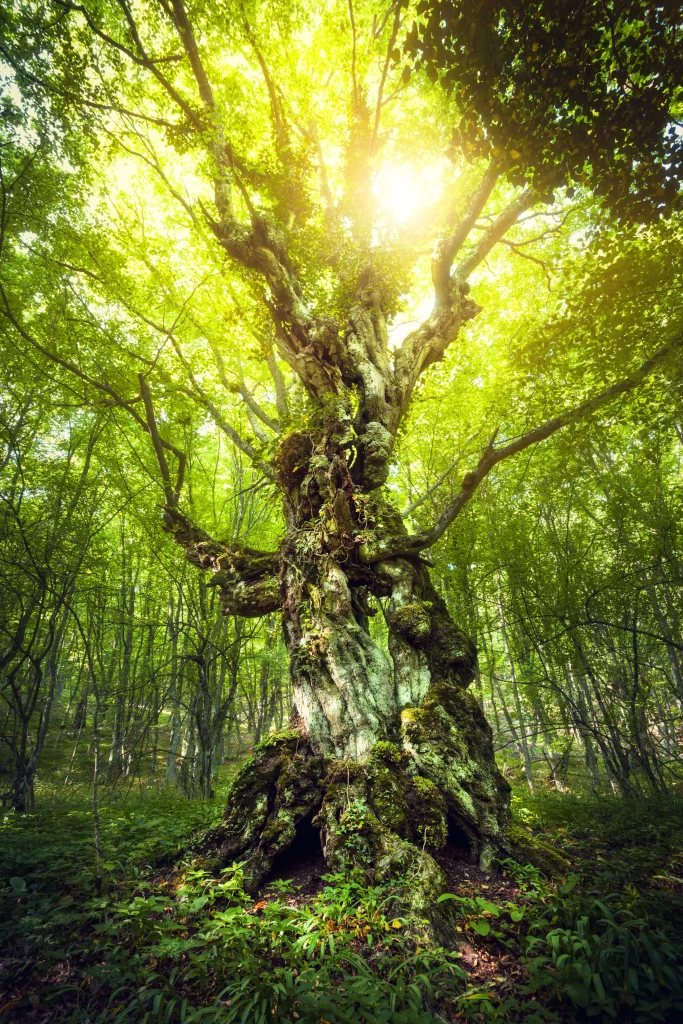
Immersion in Cross-Cultural Shamanism Retreat
Who Are Shamans and What Do They Do?
Shamans are typically high functioning people-highly respected by their communities as advisors and consultants, dedicated to healing, manipulating reality, divining, forecasting, or prophesying future outcomes. They can choose to enter altered states at will to perform a variety of functions, including ceremonialist, artist, trance dancer, chanter, singer, warrior and healer. Shamans know where to access power and information from nature. They study and communicate with plants, animals, elements, and the spirit world. They are excellent problem solvers, diagnosticians, psychologists, storytellers, teachers, and hypnotists.
Historical Shamanism
Historically, in many parts of the world and especially China, kings, queens, and emperors were always trained shamans and if not personally trained, they always employed shamans to advise them on many matters. There are indicators that Alexander the Great was such an example.
Quite probably, the human race would not have survived without the presence of shamans because they were the first doctors, knew what plants could be used for medicines, and could see where to direct the hunters to find game. They could predict the weather and had many skills that were critical for the survival of their tribes and communities.
How Did Shamans First Learn Their Skills?
The first shamans learned their skills by observing the power of mother nature, by learning that they were not separate from the plants, animals, and the elements, and by realizing that they were intimately connected to Spirit and its presence in all aspects of the web of life. Through this connection they learned the ways of mother nature, to cooperate with nature, to listen to nature. They learned to align themselves to the elements of nature and by forming alliances with specific aspects of nature, enlisting allies, they gained knowledge of how to live masterfully. In many cases they learned to rise above the ordinary laws of the physical world, to become free of arbitrary limitations, and perform supernatural acts in service to their communities.
They learned that nature is maternal and the fundamentals of life were given birth by the feminine aspect of the universe. Therefore shamans throughout the world seek to cultivate their own connection to the feminine.
Historical Shamanism and Spiritual Practice
Shamanism is the world’s most ancient spiritual practice, predating all the world’s known religions and going back as far as forty thousand years or more. Ancient gravesites dating back more than 30,000 years have been discovered in widely divergent locations showing that people were aware of some type of life after death and that they honored highly respected women and men who had positions of influence and shamanic skills in their communities. Their shamanic tools were found buried with them for use in the afterlife.
Despite efforts by Hitler and organized religion to wipe shamans and shamanism out, it has persisted until the present day within the indigenous peoples of the world. Attempts to stamp it out have come largely from those who regarded it as a barrier to their intention to control and dominate indigenous people through the sword or conversion. These attacks on shamanism have at times caused the practices to go underground for periods of time but they continue to emerge and the attempts to exterminate shamans have completely failed.
The Focus of Shamanism
The focus of shamanism is on accumulating knowledge and power in order to better manipulate the quantum field to heal, teach, and create. Shamanism is cross-cultural and has developed independently in every continent of the world, and yet there is an amazing consistency in its approach. As stated earlier, shamanism has no dogma, no religious hierarchy, and is a tradition characterized by learning from the natural world and by rigorous apprenticeships with hands-on experience.
Shamanism is a nature-based path of direct revelation, meaning that each person has access to Spirit and spirits without the need of any hierarchical structure or intermediaries. As you have seen there are many parallels between the discoveries of quantum physics and the understandings of shamanism.
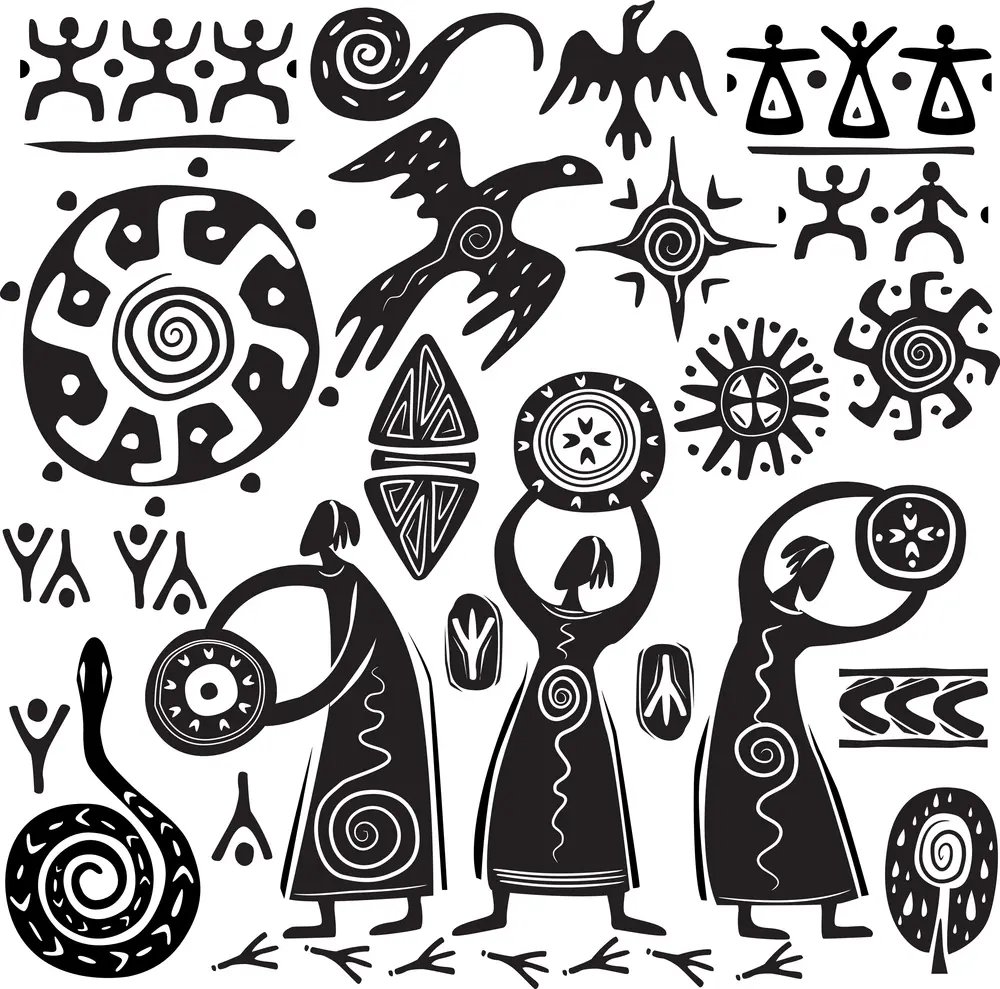
Shamanism Essentials: The Basics Package

Power Path Foundations Of Shamanism Online Course
Shamanism and Power
Shamans see that power is to be found everywhere around them in the natural world. Observing the wild animals in nature they saw vigor and vitality, fertility and athleticism, beauty and gracefulness, all attributes and virtues they sought to emulate for maximum health. They saw that everything in nature has its’ medicine, its contribution to the whole and they sought to discover their own medicine to serve and to make contributions with. So, they set out to find powerful objects to associate with in order to gather that power to fill their own biological batteries with. In this way they found power, vitality, and supreme health. They discovered ways to survive the elements and the dangers of physical life and not only survive but thrive. They learned the value of community, cooperation, listening, observing, learning, and acting with speed when the situation called for it.
Shamanism and the Martial Arts
Shamans learned to gather and accumulate power from nature, store it in the reservoirs of the body and its energy field, and then learned to unleash it in times of need. In this way the martial arts were born. All the martial arts have their roots in shamanic tradition so the philosophy of shamans and the philosophy of martial arts practice is largely one and the same. Here are some examples of these philosophies:
- Both value being in top vitality and balance mentally, physically, emotionally, and spiritually.
- Both value the power of detachment from internal and external drama.
- Both know that their power is directly related to their relationship with all that is, the web of life.
- Shamans and martial artists both value the art of conservation of energy.
- Both value removing any distractions or energy leaks that make them vulnerable to destructive forces.
- Both value impeccability in thought, word, and action.
- Both value serious discipline in training.
- Both value listening and sensing acutely with all the senses.
- Both value allowing attacking or opposing forces to deplete themselves or defeat themselves with the least amount of action from the defender.
- Both value trusting intuition and trusting the body to know the proper response without the distraction of too much thinking.
Shamanism and Prayer
All shamans we have worked with or have met have been masters of prayer. They consider their whole life a prayer. They are not afraid to consult with Spirit or the spirits they work with frequently to ask for guidance, help, blessings, and so on. They also frequently voice gratitude for the help they have been given. In their songs they pray, their dances are prayers, and they often lead others in prayer. Praying is the shaman’s way.
Shamanism and the Heart
Shamanism is known as the path with heart. One cannot be a shaman and be totally mental, analytical, or reasonable. Shamanism demands an open heart, a full heart, a strong heart, a clear heart as African shamans are wont to say. In other words, to be a shaman one has to be a lover, a lover of life, a lover of Spirit, and a lover of humankind. A shaman has to love what they do, the work of a shaman, no matter how uncomfortable or challenging. They stay up all night praying, singing, dancing and doing ceremony. They climb mountains in freezing cold weather, go on long pilgrimages, take challenging plant medicines, restrict themselves during severe plant diets, stay with sick people and doctor them for many hours. Sometimes they get no rest or sleep. Demands on them are great. They don’t complain or mind. It is all being in service and this makes them joyful and loving.
Are All Shamans the Same?
No! Not at all. There are vast differences in shamans depending on their levels of maturity and their wisdom. Shamans, like people of any other profession, may be highly skilled at what they do or not. They also may have great integrity or not. Shamans suffer from ego and maladies like addictions like many other people. There are many shamans who struggle with alcoholism, greed for money and possessions, a lust for power, or seek sexual gratification above all else. They may take advantage of people or situations at times. We have known celebrity shamans in other countries who absconded with large sums of money, made promises they did not keep, took advantage of women in ceremonies and under the influence of medicinal plants, walked off with other people’s spouses and so on. We have seen them threaten others with harm because they felt competitive with other shamans. We experienced one who attacked us verbally during a ceremony in front of many others because he just did not like us and felt threatened by us. Shamans are human, they are people, and some have trouble with their discipline and because of that, they lose their power and reputations. We know of several who ended up in jail or being deported because they broke the law. On three different occasions we had to dismiss shamans we had hired in other countries to guide us because they were sexually aggressive and inappropriate with the women. This by no means describes the behavior of all shamans who are some of the most advanced people we have ever met, wonderful teachers and role models. So just because someone calls themselves a shaman, don’t let that impress you. Check them out and learn who you can trust and who you should not trust.
What Do Shamans Today Look Like?
When most people picture a shaman these days they are drawing from movies and media depictions of shamans mostly from the past. They may envision a woman or man with a bone through their nose, tattooed and decorated with feathers, furs, and beads, perhaps drumming or dancing wildly about. While legitimate shamans in some cultures do appear and act this way it is no longer typical. Most people in indigenous communities regularly interact with others through the internet and smartphones these days and they often dress in informal but more conventional clothing. In fact many of them prefer not to stand out from the average person and only don special clothing and paraphernalia for specific ceremonies and the like. Therefore one can longer tell who the shaman is just by looking at them. If they do see someone dressed like shamans are supposed to look it is more likely to be a wannabe or a younger person with a colorful and artsy taste in the way they want to appear to others.
Mostly shamans dress in blue jeans, a simple skirt, a tee shirt, or in ordinary comfortable and informal dress. One skilled shaman I met was wearing a torn shirt with dirty shorts and sandals. I would not have picked him out as “the shaman.”
On the other hand, in sacred ceremonial remote lands, I have met shamans on the trail that looked every bit the part. They present with an aura of tremendous power and presence, not unfriendly but not overly friendly either. They simply nod recognition as they move past. While working shamans can be somewhat intimidating they are not offensively rejecting either. I met one fellow who, upon meeting a so-called shaman, was told directly not to touch him. He was so impressed by this that he himself went around telling others not to touch him. This is atypical and I have never met a shaman act this way. Just copying a shaman’s behavior will not make you a shaman. This is hopelessly superficial. Most shamans I have worked with have been warm and compassionate and friendly once we have gotten to know each other.
Shamanism and Healing
This topic is so big that we have dedicated a page entirely to it.
What are the benefits of shamanism and walking the shamanic path?
In some ways there are no words to express the value of walking the shamanic path. Granted it can be very challenging at times, when faced with people who are very disturbed or very ill. It can be uncomfortable for the body in loss of sleep, hard diets that demand refraining from foods, sex, and rest. There are hard sacrifices as well as gratifications, freezing all night ceremonies, baking in the desert sun, swatting mosquitoes in the jungle heat, slogging through knee deep mud and pouring rain, feeling nausea from plants like peyote and ayahuasca. This is all nothing compared to the rewards. The shamanic path gets you off the couch and into the amazing beauty of the natural world. You find yourself having incomparable, extraordinary, higher-centered experiences that show you where real power lies. You laugh more, cry more, and are moved beyond description by the knowledge revealed directly to you from Spirit. If there was ever any doubt in you that Spirit exists and supports you completely then one day it will vanish in a twinkling. There are moments of incomparable joy, even ecstasy, and moments when you find out what you are truly made of, that you can do anything you set your mind to.
There is nothing like the power of service to others of which there are ample opportunities. There are more times of peace within and the appreciation of the simple and the ordinary.
And yes, there are times of the extraordinary pain of self-confrontation, seeing the lies of the ego, the fear that underlies so much thinking, the lack of impeccability, the laziness, the addiction to old beliefs, to feeling sorry for oneself and so on. The good news is that this pain accompanies the release of these things that have been stowed away and denied and when they have been seen and released, there is great relief and restoration.
There is discovery of real power, not the false power of ego, but the power of simply knowing what to do and when to do it. There is the quieting of the mind and the power that comes with discipline. In short the shamanic path is the navy seals of consciousness exploration and expansion. That, in a nutshell, is the shamanic path and once you take it on you can never really get off it without paying a terrible price because you will know too much, too much to pretend you don’t know better. Then if you choose to go back to your addictions and folly you will pay much greater consequences than if you had never started the shamanic path in the first place. It’s absolutely worth it. There is a price to pay, your own comfort and laziness is the price.
Shamanism and Plant Medicines
While not all shamans in all parts of the world alter their consciousness through the ingestion of plant medicines, the practice is widespread. Obviously, plant medicines are more in use in places like the Amazon where there are tens of thousands of plant species, many of them mind altering. However, consciousness altering plants are consumed even in the artic regions of Siberia with the fly agaric mushroom and in the high Andes with the Huachuma or San Pedro cactus that grows at altitudes up to ten thousand feet where few other plants grow. There is evidence in the Andes of Peru that consumption of Huachuma for ceremonial purposes goes back at least five thousand years. The tobacco plant, a hallucinogenic power plant, is ubiquitous in both North and South America and has been exported and traded for thousands of years to all parts of the world. Ancient tobacco was found by anthropologists in the King’s chamber of the Great pyramid in Giza, Egypt. References have been found in the Middle East to soma and other plant substances used for ceremonial purposes in ancient times. It seems that humans’ relationship with plants to alter their consciousness is quite old.
In a shamanic sense, the use of hallucinogenic plants is for the purpose of pursuing knowledge and increasing awareness rather than simply recreational. For shamans, all sacred plants were and are honored and treated with reverence and respect, consumed in the container of a ceremony or within the context of healing work. Many Native American indigenous consume peyote specifically for doctoring the sick or for those who have lost their way to alcoholism and drugs. Psilocybin mushrooms have long been used by the indigenous in Mexico for similar healing purposes and in the Amazon many plants are used including the great mother vine Banisteriopsis Caapi and its companion plant Chacruna, who are together known as ayahuasca used for diagnosing and healing the sick.
In addition to healing, these plants are used by shamans to expand their consciousness, learn from the plants, seek lost knowledge, and travel to other dimensional states. The sacred datura is seldom used for healing but is said to make someone a powerful shaman if they survive the initiation of three days and nights in pitch black in an extremely altered state.
Just anyone taking these plants will not transform someone into a shaman overnight but they can definitely open doors of perception and lead to understanding many shamanic perspectives. One could say that they are part of shaman’s toolbox and can be considered powerful allies. For shamans taking these plants requires preparation and dieting and only then can one benefit from their teachings. Recreational use is considered quite risky as one remains unprotected and vulnerable to unwanted energies.
Indigenous teachers are much more discerning about plant substances and know the proper songs and ways to prepare and take the plants. For example, all the shamans I have worked with have extolled the powers of marijuana as an anti-inflammatory topical medicine but warned against its use by taking it internally. They say it scatters your energy and makes holes in your energy field. On the other hand, they say that taking peyote internally can open the doors to great teachings and actually teaches people how to live in harmony with nature. In addition, peyote is a powerful natural antibiotic and has been known to restore the nervous system and mobility to accident and stroke victims.
Shamanism, Music, and Song
Shaman’s songs are of two types. Either they are traditional songs whose origins are lost in time, songs of healing, songs praising plants, animals, and elements, asking for their help, songs entreating allies to help someone and so on. These songs are almost all prayers put to melodies. The second type of song is spontaneous, downloaded directly from a plant, a mountain, a cloud, or directly from Spirit. Sometimes these spontaneous songs are sung only once and sometimes they become part of a shaman’s tool kit and they sing it often. After a time, others may pick it up and then over time it becomes traditional. Whether the song is traditional or spontaneous the song is rarely if ever sung exactly the same way. Either some words change or the melody, like jazz, goes through various permutations. The songs may be sung falsetto, be mixed with whistling and humming, sung faster or slower, or take on a different focus or topic. Sometimes it is accompanied by clapping, a rattle, drum, or instrument like a guitar but most times it is sung acapella.
In the upper Amazon we have noticed that some ayahuasqeros don’t allow their songs to be recorded and some purposely sing them with the words mumbled so that no one else can steal their icaro (sacred song). Others freely share their songs and teach others the words to them. We have tended to follow this policy with our own songs but have regretted it on occasion when someone sings so out of tune it is no longer recognizable or sings it like a dirge rather than joyously. In the end detachment is the best policy. When a song is shared it is time to let it go no matter what. After all there is a limitless supply. If you don’t, the ego is in charge.
Learn About Healing Songs
Discover how the shamanic perception is that sounds, vibrations, and different octaves can have a significant healing influence on someone, helping to lift their spirits, calm them of anxieties, or directly change the pattern of illness that has taken hold.
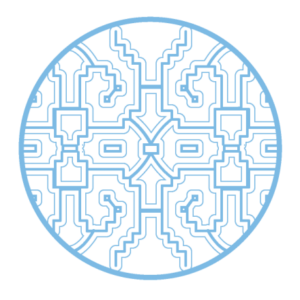
How Are Shamans Paid for Their Work?
There is great controversy over this subject. Some native people say that shamans always provide their services to the community for free and that they should never charge for their work. There is a bit of truth to this in that shamans will not send anyone away who cannot pay for healing work. In more ancient times the community took care of their shamans by providing them with food, shelter, and their basic needs similar to the way clergy’s needs are taken care of by their congregations. However, there is much evidence that shamans have more typically been paid in goods for their services. Perhaps a couple of chickens, a blanket, a horse, furs, some articles of clothing and so on. This is clearly payment for services rendered. Today times have changed and most people live in a capitalist-oriented economy where money is the means of payment. Even in socialist and communist countries money is the means of exchange. Basic living expenses are high in most countries and if a shaman is to give away their services, then they have to work another job to make ends meet and this robs them of the time available for their shaman work. An example would be Rolling Thunder, a tribal spokesman for the Cherokee and Shoshone tribes and a Medicine Man who had to work long hours for the railroad and this took up much of his time, even impairing his health.
In our experience shamans from around the world in the present day do charge for their work in order to survive. Often ceremonies require materials that are burned or used for offering and the shaman may work long hours into the night singing, chanting and healing many people. They need reimbursement for all of this. In any case, if they do not state a fee one should offer to give them a donation for services rendered as they do have families to support and living expenses like everyone else.
On the other hand, one should not pay them exorbitant prices as there are dishonest shamans. A mestizo shaman in Peru demanded $400 US dollars for a small bottle of “Special herbal medicine” she had prepared especially as a tonic for health. She stated this tonic was required to get well from a bad cold. This same bottle could be purchased in the local market for $6 US so her special tonic wasn’t taken despite her warnings.
Shamanism and Pilgrimage
A big part of a shaman’s work is both making pilgrimages to sacred places and leading others to these sacred temples, ruins, caves, mountains and power places. Often these places of pilgrimage have special qualities, medicines, and gifts for those who make the journey and visit them. Some of these places are famous sites that have become protected as World Heritage Sites like Machu Pichu in Peru, Tiahuanaco in Bolivia, Stonehenge Avebury Circle in England, The Great Serpent Mounds in Ohio, Tikal in Guatemala, Teotihuacan near Mexico City, the great Pyramids at Giza and so many more. However, there are many sites that are sacred to local tribes in their terrain and may not be well known at all. In fact, many of them are kept secret from outsiders such as the Blue Lake in Taos Pueblo, New Mexico. Some places can be visited such as a sacred spring, hot pools, a waterfall, or local cave but require a special invitation by a local shaman, who must accompany you there.
Many shamans make a living on the side by offering their services as guides in these special sites. Their services may be invaluable as they can explain the powers the place holds as well as guide the visitor in leaving the proper offerings and teaching the right way to ask permission to enter from the guardian spirits of the place. They can also offer to teach you how to protect yourself from possible harmful spirits or tell you where to stand and sit to avoid becoming overly charged by the power of that place.
Members of the Wixarika tribe in the Sierras of central Mexico live several hundred miles from their main place of pilgrimage, the peyote fields of Wirikuta and Cerro Quemado, the sacred ten-thousand foot mountain which they must climb. Most of the people of that tribe are encouraged to go there on pilgrimage at least once in their life, but there are special benefits if they can go five times accompanied by their maracames (shamans) who lead them in ceremony. They must stop at a number of sites sacred to the people on the way to Wirikuta to pray and prepare for entering the sacred peyote fields. The high maracames may go annually to maintain their power and vitality and bring back the sacred peyote for the people. The trip may take an entire month and people save up for years for the expense of making the trip. First timers are blindfolded before entering and then allowed to see it after they have walked in. Originally it required walking there and back the whole way but now mostly trucks and vans are used to transport everyone.
Shamanism and Cultural Appropriation
The subject of shamanism has become politically charged by accusations of cultural appropriation and social pressure to leave it entirely in the hands of indigenous people. The reality is that it is a little late for that. The horse is already out of the barn so to speak. It is not our intention here to engage in all the controversy and drama about who and what is a shaman. We will attempt to present a balanced and practical view of it. If you wish to read a full account of all the different points of view, we refer you to the Wikipedia pages online regarding shamanism9.
Regarding cultural appropriation the picture is rather complex. Some indigenous tribal peoples take offense at their totems and allies being used as names for sports teams or at non indigenous people practicing their ways such as running sweat lodges, doing Peyote ceremonies, wearing fashionable clothing that is taken from their tribal dress and so on. Some traditionalist elders forbid members of their tribe from showing non indigenous people their ways, dances, songs, prayers, and so on. The consequences for violating these taboos carry grave consequences, even assassination of the rule breaker. There are many non-indigenous people who agree with these taboos from a political stance and harass others online from doing anything that appears like cultural appropriation.
There are examples of egregious rip offs of native tribes’ practices that have ended in tragedy when untrained individuals running sweat lodge ceremonies and giving out plant medicines have killed people because of their lack of expertise while charging outrageous prices for the opportunity. There is a legitimate reason for concern.
On the other hand, there are indigenous elders who recognize that times are changing and that because of prophecies and the world in great transition their secrets and practices must now be shared if we are to survive as a species10. Tribes whose songs, ceremonies and practices had been dying out have received a boost from outsider’s interest and much lore and knowledge is being preserved because of this.
The problem really seems to be the tendency for human beings to polarize over their opinions. There is always a middle ground. Yes, there are pros and cons to sharing indigenous wisdom with people outside the tribes. Some severe damage has been done and some great contributions have been made. The solution as usual lies not so much in shaming, cancel-culture, and attacking but in dialogue and distinguishing between what is harmful and what is helpful.
We at the Power Path have learned the shamanic ways only from indigenous teachers who have freely chosen to share their considerable knowledge with us and have actively encouraged us to teach as many people as possible so that their traditions are not lost, not left to die out.
Footnotes
1 https://peterkingsley.org/product/reality/
2 https://en.wikipedia.org/wiki/Parmenides
3 https://en.wikipedia.org/wiki/Socrates
4 https://press.princeton.edu/books/ebook/9780691265025/shamanism
5 https://shamaniceducation.org/plant-allies/
6 https://shamaniceducation.org/indigenous-communities/
7 https://en.wikipedia.org/wiki/Malidoma_Patrice_Som%C3%A9
8 https://en.wikipedia.org/wiki/Dagaaba_people
9 https://en.wikipedia.org/wiki/Shamanism
10 https://shamaniceducation.org/archiving-ancestral-wisdom-in-guatemala/
Related Articles
Continue Exploring
©2023 All rights reserved. www.thepowerpath.com
You may make copies of this writing and distribute it in any media you wish, so long as you do not charge for it or alter it in any way. You must credit the author and include this entire copyright notice. While the text may be shared, no audio files, including lectures, music and/or sound meditations, may be posted on any site for any reason without written permission from the Power Path.






